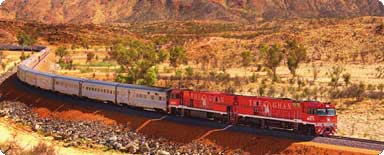I’m currently twenty-three hours into a forty-seven hour trip on Amtrak’s Empire Builder train, a journey which travels more than halfway across the US, from Seattle to Chicago. As I write this, the train is hurtling across Montana’s northern plains between Malta and Glasgow. To the north, it’s dead flat as far as the eye can see; to the south, there are hills in the distance, but they are mostly insignificant.
This is a distinct change from earlier in the day, as the train weaved its way through the Rocky Mountains, so high in altitude that even the tracks were covered in snow.
This is farming country – the landscape is occasionally interrupted by farmhouses, barns, grain silos and graveyards of rusted-out agricultural machinery. I haven’t seen a car on the road that runs beside the railway line for about half an hour, and I can’t recall the last place where my mobile broadband device had a signal.
Not wanting to shell out $400 or more for a sleeper, I’ve chosen coach class, which effectively means being unable to lie down and stretch out for two nights in a row. The seats in couch class do have the ability to recline quite a way, and have a decent legrest that pops up, but it’s still not quite the same as having a bed to stretch out on. I’m fortunate that the train is more than half-empty and I have staked a claim on both my seats; this let me lie across both of them during the previous night and get around eight hours of – frequently interrupted – sleep. Not ideal, but considerably better than a bus.
The entire journey costs $153; possibly less if booked in advance – but, strangely, at least $100 more if broken in the middle for a night. As you might imagine, I’ve decided not to go with that option, and thus am in it for the long haul.
Naturally, there’s not a lot to do, other than look at the scenery or eat in the cafe, so bring a lot of reading material or a laptop if you’re inclined to get bored easily. My carriage had power points at each seat, but other Amtrak trains I’ve been on haven’t always had this, so be prepared to charge your electronic equipment up in the toilets.
The dining car is available during breakfast and lunch, but must be reserved for dinner; the cafe is open during daylight hours, although strangely the attendant takes a break smack bang in the middle of breakfast time.
The train’s air conditioning seems to run permanently, and it can get cold in the middle of the night, so I recommend either bringing a blanket, or wear as much layered clothing as you can. I’d also recommend a facemask, if you’re sensitive to light when trying to sleep, because it’s never completely dark inside the train.


Recent Comments